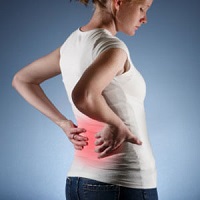One concern expressed by some about chiropractic is that doctors of chiropractic treat patients for too long. However, others speculate that the average medical intervention for low back pain is too little treatment.
 A study by Croft et al. looked at the outcomes of 490 patients who came to their general medical practitioners with complaints of low back pain. Prior to this study, the general belief was that “80-90% of attacks of low back pain recover in about six weeks, irrespective of the administration or type of treatment”, meaning back pain would resolve on its own. However, this conclusion was proven false by the study.
A study by Croft et al. looked at the outcomes of 490 patients who came to their general medical practitioners with complaints of low back pain. Prior to this study, the general belief was that “80-90% of attacks of low back pain recover in about six weeks, irrespective of the administration or type of treatment”, meaning back pain would resolve on its own. However, this conclusion was proven false by the study.
The study found two reasons for why it has been believed that back pain resolves on its own. One is that patients merely stopped reporting back pain to their doctors even though the pain was still there. Most patients failed to report continued pain to physicians because they had little confidence that continued discussion and treatment would yield any benefit. Second, they found back pain to fluctuate, meaning it is not constant and most people experience periods of extreme pain and then a period of relative freedom from pain. This freedom, however, did not mean that the problem causing the pain was gone, only that pain was not evident at that time. Mistaking no pain as no problem is a common mistake, but pain does not occur until 70% of the nerve is pinched. This means that often, a nerve is pinched from a misalignment or other interference without showing any symptoms.
Both factors contribute to the preconceived notion that 90% of back issues are resolved within 2 months, but nothing is further from the truth.
An effective resolution to the back pain is chiropractic care. Chiropractors take time to make sure your nervous system is functioning and that back pain will not resume, and continued maintenance care is the best way to ensure that.
Croft PR, Macfarlane GJ, Papageorgiou AC, Thomas E, Silman AJ. OUTCOME OF LOW BACK PAIN IN GENERAL PRACTICE: A PROSPECTIVE STUDY. British Medical Journal, 1998;316:1356-1359.


